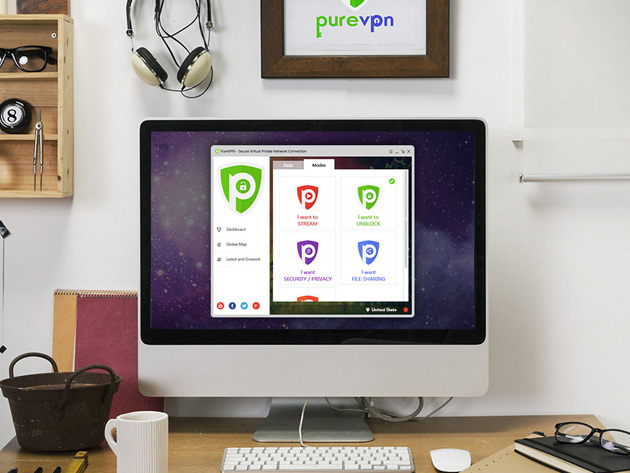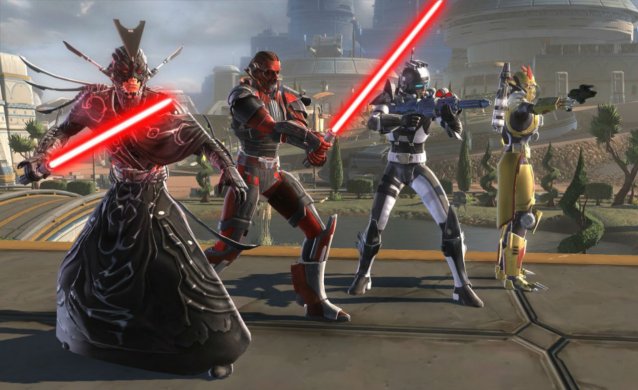

Harmonix did not invent the modern, peripheral based music/rhythm game. That distinction rightfully belongs to Konami. Instead, Harmonix managed to marry the inherent fun of virtually playing an instrument to a deep love and clear understanding of the accompanying songs, and in the process created an experience that felt less like playing a game and more like actually creating music. The company is single-handedly responsible for every significant innovation the genre has seen since Guitar Hero was first unleashed on an unsuspecting public back in November of 2005: drums, vocals, harmonies, and a massive, constantly updated music store to keep the experience fresh.
Harmonix’s previous games now seem like warm-ups for the main act. The company has clearly been honing its chops, working its way up to the main event, and the day has finally come. Rock Band 3 is here, and it is magnificent. Massive in scope, content, and innovation, but always manageable, approachable, and dedicated to player choice, Rock Band 3 is the absolute gold standard in music games. It just doesn’t get any better than this.
Game Rant has already given significant coverage to Rock Band 3’s new instruments, Road Challenges, pitch correction, and Pro Mode, and anyone who hasn’t read up on those features is encouraged to do so.
Rock Band 3 is, by far, the most structurally open of Harmonix’s games, and no two players will move though it in quite the same way. Though there are still several modes to choose from (Career Goals, Road Challenges, Quick Play, Training), progress in the game is not tied to any one of them. In fact, Rock Band 3 largely does away with the sort of career mode that has been a staple of the series in the past. Instead, progress is made one song at a time, in absolutely any of the game’s modes, and tracked on the Career Goals screen.
Goals are similar to the Challenges from Rock Band 2, and cover everything from calibrating the game to hitting “every note in every song in Rock Band 3.” Players can tackle specific goals from within the goals menu, but playing any song in any mode will count toward its goal. In this way, players are always making progress, always earning points, and always accruing fans.
This is not to suggest that custom characters and bands have been left out. The journey from playing lowly basement gigs to packed stadiums is still very much a part of the experience. Player created characters are more customizable, and display more personality, than ever before. Their onstage animation is the best the series has seen. When they’re not onstage, custom characters and bands are still onscreen in the background of every menu, hanging out in the rehearsal space, say, or walking along train tracks. When career milestones are hit, brief vignettes kick in showing the band doing everything from taking a quick subway ride to living it up a bit too much at a rooftop after-party. Though Rock Band 3 is not a game people will play for the graphics, it is a clear step up from Rock Band 2, visually.
The ultimate success for any band remains being inducted into the Rock and Roll Hall of Fame. In Rock Band 3, for the first time, players can truly reach that goal on their own terms. Because the game offers complete freedom in how the song library is tackled, players can make it all the way to the credits without ever enduring a song the just don’t want to play. The boost to accessibility this grants Rock Band 3 can not be overstated.
Of course, being inducted into the Hall of Fame is hardly the end of the experience. Working through all the game’s goals is a virtually endless endeavor. Thankfully, Road Challenges and Quick Play mode offer ample opportunity to explore all that Rock Band 3 has to offer.
Road Challenges play out like miniature versions of the Career Mode from Rock Band 2. They range from six to twenty songs and are split between a number of venues, each of which offers a choice of setlists. Once again, in Rock Band 3, the player is in charge of the music. Each gig on the road also includes bonus objectives for players to attempt, such as staying in Overdrive for extended periods of time. Successfully completing the bonus objectives awards Spades, which in turn feed back into goals. It’s a great system that allows players to have a “complete” experience, no matter how much time they have to play.
Quick Play mode now includes a number of ways to sort content. Songs can be broken out by genre, decade, difficulty, and more. Players can create and save their own playlists, or choose one of the game’s built-in setlists. There is even a never ending Party Shuffle, for those times when the music simply must not stop. As in all of Rock Band 3’s modes, players can freely drop in or out.
Continue to page two of Game Rant’s Rock Band 3 review!
Continued:
« 1 2 »




 E3 2012: 10 Rumors That Arent Coming True
E3 2012: 10 Rumors That Arent Coming True Setting the Record Straight on Edward Snowden and the Paris Attacks
Setting the Record Straight on Edward Snowden and the Paris Attacks Star Wars: The Gay Unleashed! (In Small Quantities)
Star Wars: The Gay Unleashed! (In Small Quantities) Metal Gear Solid 5: Where to Find Every Music Cassette Tape
Metal Gear Solid 5: Where to Find Every Music Cassette Tape EA Sports: UFC How to develop a solid Gameplan
EA Sports: UFC How to develop a solid Gameplan